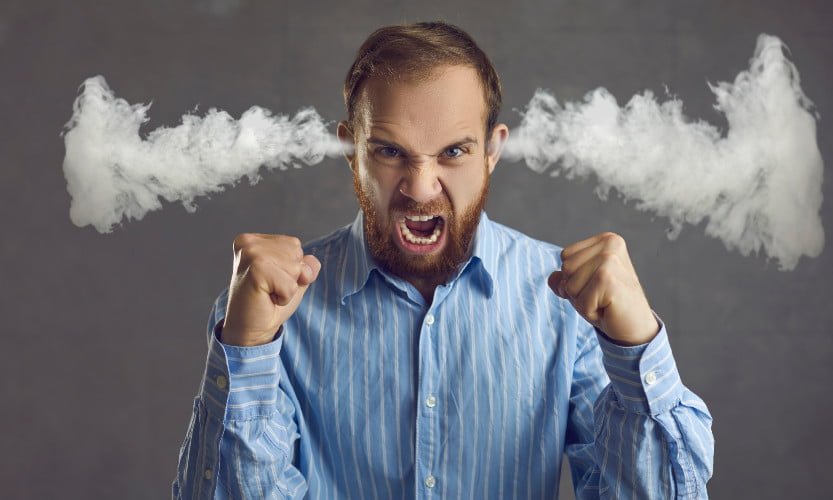According to storytelling legend Robert McKee, ‘nothing moves forward in a story except through conflict’.
Yet conflict is something we tend to avoid in everyday life — so it can feel strange to subject our beloved characters to the strife that comes with dramatic conflict, especially for new writers.
The good news? Your discomfort isn’t for nothing. In fact, a central conflict is the first and foremost ingredient in writing compelling stories. The aim of this guide is to show you how to include it in your writing.
In this article, we’ll cover:
- The definition of the term ‘central conflict’
- The different types of central conflict: internal, external, and the various subcategories
- Our tips and tricks for creating a central conflict
- Frequently asked questions
So, what is a central conflict, and how do you use it to craft a propulsive narrative in your stories?
What Is Central Conflict?
Central conflict is when a main character’s strongest desire is met by an equally strong internal or external obstacle.
The best way I’ve seen this explained is in Immediate Fiction by Jerry Cleaver (who as you might guess, is all about getting stories moving, fast). Cleaver states, ‘to create conflict, the kind that’s needed to move story, you must have two elements — a want and an obstacle’. In other words:
Want + Obstacle = CONFLICT
Simple, right? However, there is one condition. The character’s ‘want’ and ‘obstacle’ both have to be strong, so strong that they’ll fight tooth and nail to beat each other. If either the want or the obstacle is weak or unbalanced, the conflict will be too, and the driving force of the story will suffer.
Apply this idea to any classic story, and you get the central conflict definition above. But why is central conflict so important?

What Is The Purpose Of Central Conflict?
The purpose of central conflict is two-fold.
At a micro level, your main conflict is the problem your character is trying to solve, starting with the story’s inciting incident and resulting in their actions (or inaction). So, conflict in a story guides your plot.
Zooming out to a macro level, your character’s actions in the face of their want and obstacle are what drive the narrative. It’s why your main character should own the central conflict: because they’re in the driver’s seat of your narrative, and as readers, we view your story’s progression through them.
Why does this matter? Well, Cleaver’s got a nifty equation for that too:
Conflict + Action + Resolution = STORY
A major central conflict is one of the core elements of successful storytelling. Conflict forces characters to act, and these actions show us who they are, what they value, and how they think — particularly in adverse situations.
Without conflict, nothing happens, and we get bored. There are no stakes, no reason for readers to invest their time or emotions, and no payoff. Without conflict, we disengage. So, we need the push-and-pull of a main character propelled into action against a staunchly opposed force. It’s what gets and keeps us reading.
The Different Types Of Central Conflict
Central conflict can be divided into two categories: internal and external conflicts.
External conflict is when a main character is set against another character, society, technology, nature, or even powers like fate or supernatural forces.
In contrast, internal conflict is usually a form of self-conflict, which sees a character in opposition with themselves.
Internal Conflict
Character Vs. Self
When the central conflict of a story is between the main character and themselves, it’s often with their own mind (eg. a moral conflict), or specific to mental health (trauma, addiction etc).
Internal conflict is often used to shape the narrative of a literary or dramatic character in novels where the focus is on character development over plot.
In the case of speculative fiction, these internal conflicts can even be within sub-genres like werewolf tales, where characters may fight against their full-moon affliction.
There’s often one main internal conflict in a story, which is generally only resolved at the very end.
Examples:
- A classic example of character vs. self as a central conflict is Hamlet, where the play’s titular protagonist wrestles with deciding whether to fulfil his dead father’s wish and kill his murderous uncle.
- Another is Rule of Wolves by Leigh Bardugo, where Nikolai is the charming king with a demon inside, and Zoya is his beautiful but bitter army general, wrestling with childhood trauma as a young woman. This is a good example of dual points of view wherein characters’ internal conflicts contrast.

External Conflict
Character Vs. Character
The character vs. character central conflict is a tale as old as every tale ever; it’s why we love hero underdogs and love to hate dastardly villains.
In many cases, this acts as the story’s central conflict. And while this conflict is routinely depicted as the fight between good and evil, it’s also used to depict opposing forces in everything from romantic dramas, to soap operas, and crime thrillers (think the textbook serial-killer antagonist).
Examples:
- Scott Lynch’s The Lies of Locke Lamora is a character vs. character conflict where master thief Locke swears vengeance on the gang boss who murdered his childhood friends.
- In the Throne of Glass series by Sarah J. Maas, the protagonist, Celeana/Aelin faces off against four villains. This gives the seven-book series the room to pursue each conflict, with other characters also layering their own.
Character Vs. Society
An obvious example of this central conflict is a character working against a dystopian government or institution eg. the law, but it can also include pressure from societal norms and traditions, or alternatively, taboos. The protagonist in these scenarios is usually an outsider; a rebel who sits apart from the collective, resisting society’s demands to uphold the status quo — sometimes violently.
Examples:
- A classic example is 1984 by George Orwell, where Winston’s job is to rewrite history in a chillingly-envisioned London, under the control of the totalitarian government, The Party.
- Brandon Sanderson’s The Final Empire is another epic fantasy. Here, the Skaa live in misery as slaves under the thousand-year-old Lord Ruler’s empire, until a rebel escapes his prison and starts a revolution.
Character Vs. Technology
In a character vs. technology central conflict, the enemy is science and progress, or the pursuit of it eg. inventions (like robots or artificial intelligence) evolving beyond human control.
These stories entertain philosophical questions of morality, humanity and consciousness, and religion, with scientists often accused of ‘playing God’. As technology continues to advance, such tales can feel topical, even cautionary.
Examples:
- In Mary Shelley’s Frankenstein, the primary theme of creation is told through Dr. Frankenstein, where character vs. technology is his conflict; this is in contrast with the major central conflict for the monster (character vs. society).
- I, Robot by Isaac Asimov is an influential collection of short stories within this conflict, and also science fiction. He defines the Three Laws of Robotics that protect humans, and then pushes them to their limits.
Character Vs. Nature
When your character’s battle is with the environment, weather or wildlife, it’s a nature conflict. In the past, this was often centred on the sea or deserted islands, with the challenge of survival against an untamed, unbeatable force. For a main character struggling alone, you can also layer external and internal conflict.
Examples:
- In terms of classics, you can’t go past Herman Melville’s Moby Dick, where Ahab’s obsession with the whale that claimed his leg drives him to set sail to hunt the animal down, at all costs.
- Another sci-fi example is The Martian by Andy Weir, which sees astronaut Mark stranded alone on Mars, struggling to survive until Earth’s next mission touches down on the red planet.

Character Vs. Fate
Character vs. fate is a well-trodden central conflict, beloved in Greek myth with stories of characters, deities and prophecies.
As a conflict, it’s effective at exploring determinism vs. free will for protagonists on seemingly pre-ordained paths. Can they escape their fortune? Will they try? Or will they just wait for fate to claim them, like in the old Greek tragedies? These questions captivate us still.
Examples:
- The Wheel of Time by Robert Jordan is a high fantasy example of character vs. fate, where Moiraine searches for the prophesied Dragon Reborn, humanity’s weapon against the Dark One.
- The concept (and conflict) in Kristin Cashore’s ‘Graceling’ is that Katsa is born with a killing Grace — a rare, exceptional skill — and must rebel against the king exploiting her fate for a deadly advantage.
Character Vs. Supernatural
A favourite for writers of speculative fiction, the supernatural conflict is all about the unknown (or partially known). This is where stereotypical ideas of ghosts, witches, vampires, werewolves, zombies, gods (and demons), superheroes, and aliens come out to play in the arena of the strange or inexplicable.
Examples:
- Jennifer Saint’s Ariadne is a feminist retelling of the Greek myth of Theseus and the Minotaur, also adding gods and demigods to the plot.
- The Expanse series by James S. A. Corey is set in a world where humanity has colonised the solar system. And while there are lots of different conflicts, Captain Jim Holden’s is with a mind-bending alien.
How To Create A Central Conflict For Your Story
If you’re already writing, perhaps one of the above main conflicts stands out clearly. But if you haven’t started yet, think about the nugget of an idea you want to pursue. Is it a character, a plot type, or a setting? Going back to want + obstacle, what is the obstacle to a potential main character’s desire that sounds like one of the central conflicts? Go with the most explosive want + obstacle for surefire conflict.
Here are 6 more tips and tricks for creating a central conflict:
Big Obstacles Make For Big Stakes
It’s not just about your main character achieving their desire. It’s also about their opposition — the obstacle — doggedly persisting. What’s at stake if your character doesn’t get what they want? Ideally, the opposition winning, with extreme consequences.
Align (Or Misalign) The Conflict With Your Protagonist’s Wants
Say your central conflict is your character vs. fate. What if they don’t believe in destiny, actively seeking to act against it? This layer of character vs. self will add tension and weight to their decisions, and make your story more interesting.
Vary Your Characters’ Attitudes Towards The Conflict
Your secondary characters won’t always align with your protagonist on how to solve your major conflict. In fact, they may argue about courses of action or even take matters into their own hands ie. layering character vs. character conflict.
Things Have To Keep Getting Worse
An excellent way to do this is by staggering your conflict’s development throughout your plot points. If you’re using something like Christopher Booker’s ‘The Seven Basic Plots’, it’s easy, as each plot has a framework for ratcheting up the tension as you progress.
Your Central Conflict Must Be Worthy Of Your Themes
This is about not minimising conflict — because when you finally know what your story is about, your conflict will need to be complex enough to carry the themes you’re addressing. Make your central conflict strong, and make it difficult.
Don’t Just Layer Conflict, Layer Obstacles
Take a cue from real life: there’s often more than one obstacle to achieving something; smaller, less important obstacles, but obstacles all the same. So, brainstorm what else could stop your main character from getting what they want, and add these in, too.

Frequently Asked Questions
What Is An Example Of Central Conflict?
An example of central conflict is Brandon Sanderson’s The Final Empire (and the rest of the books in Mistborn Era One). The ‘character vs. society’ conflict in this epic fantasy sees the Skaa living in misery as slaves under the thousand-year-old Lord Ruler and his evil ministries, until a Skaa rebel named Kelsier escapes the empire’s prison and starts a revolution.
How Do You Identify A Central Conflict?
To identify a central conflict in a story, ask yourself what the main character’s biggest challenge is: what do they overcome by the end of the story? If the answer is themselves, the central conflict is internal (character vs. self). Otherwise, it’s external (character vs. character, society, technology, nature, fate or supernatural).
What Is A Central Conflict And Climax?
A central conflict and climax refers to a story’s inciting incident, its central conflict that advances the plot’s points, and how the story’s climax is resolved. Here, the central conflict is defined as when a main character’s strongest desire is met by an equally strong internal or external obstacle.
Crafting Central Conflicts
As you’ve learnt throughout this guide, central conflict really is the first and foremost ingredient to writing captivating stories. So, ensure that what your character wants and the obstacle to obtaining it are strong, balanced, and directly opposed for a central conflict that hooks readers until your very last page.
Jericho Writers is a global membership group for writers, providing everything you need to get published. Keep up with our news, membership offers, and updates by signing up to our newsletter. For more writing articles, take a look at our blog page.










